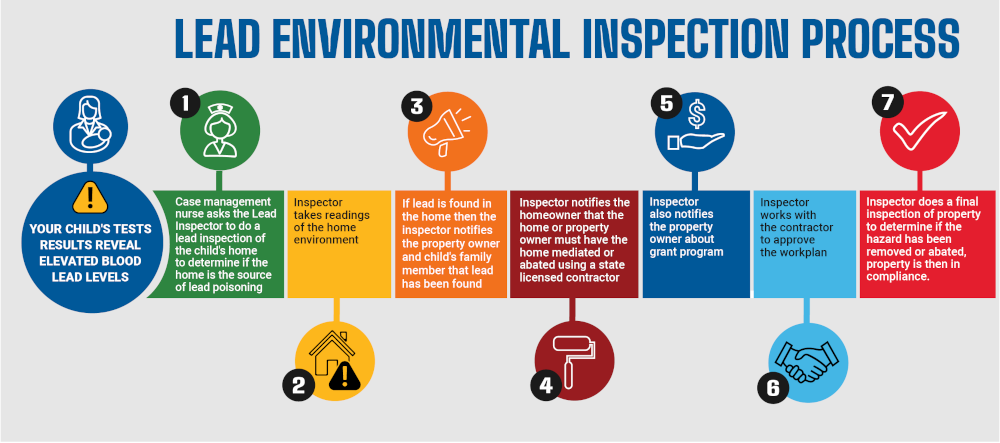Lead Poisoning Prevention

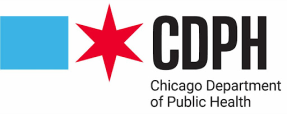
Who We Are
The Chicago Department of Public Health (CDPH) works to detect and address exposures to lead hazards. Through strategic inspections and abatement, as well as public education campaigns and testing, CDPH is leading efforts to permanently eliminate lead exposure to children. As a result, the number of children with elevated lead levels has declined from one in four tested in the late 1990s to less than one in 100 today.
The Lead Poisoning Prevention Division gets its mandate from the Illinois Lead Poisoning Prevention Act, and the State of Illinois' Administrative Code.
What We Do
Childhood Lead Poisoning Prevention Program
Program Targeting
The elimination of lead poisoning among children, pregnant women, and nursing mothers using intervention methods such as lead testing, lead environmental inspection, and case management and lead remediation and abatement.
Case Management
Children with a confirmed elevated blood level of at least 3.5 mg/dl are referred to the case management unit. Public Health Nurse will meet with the family to conduct a social developmental assessment, provide nutritional counseling, coordinate with the lead inspector, and refers the child for additional services as needed.
Environmental Inspection
A Licensed Lead-Risk Assessors inspects the interior/exterior of the residence of where a child has received a confirmation a positive lead blood test. The risk assessor inspects the home environment to find the source of how the child became lead poisoned.
Enforcement
Assures that property owners have the lead hazards removed by enforcement of the city and state lead laws via the court system.
Healthy Homes Grant Program
To assist qualified home or property owners with the removal or mediation of lead hazards which can be costly.
Community Engagement
Provided educational outreach about lead poisoning prevention to local communities.
Child Lead Wellness Check
Learn more about what to expect after your child's wellness check at ages 1, 2, and 3 years of age.
Lead Environmental Inspection Process
Click the image below to enlarge:
Healthy Homes
"Healthy Homes" is a century-old concept that promotes safe, decent, and sanitary housing as a means for preventing disease and injury.
Healthy Homes is a HUD program that seeks to prevent disease among children that stem from being exposed to various types of environmental hazards in the home, such as lead, mold, allergens, and asthma. There is a lot of emerging scientific evidence linking health outcomes such as asthma, lead poisoning, and unintentional injuries to substandard housing. There are more than 6 million substandard housing units nationwide, and we would like to empower every family with the tools and education to better their homes regardless of the age of the home.
All homes regardless of whether they are new or old can contain hazards. Giving your home a regular check-up can help you ensure and maintain the health of your home. A healthy and safe home promotes the healthy growth and development of your family and can reduce healthcare costs. Just as every person needs regular checkups, so do our homes. Give your home a checkup to ensure that your home is a healthy, happy home!
Eight Principles For Healthy Homes
Keep it Dry
Prevent water from entering your home through leaks in roofing systems, rain water from entering the home due to poor drainage, and check your interior plumbing for any leaking.
Keep it Clean
Control the source of dust and contaminants, creating smooth and cleanable surfaces, reducing clutter, and using effective wet-cleaning methods.
Keep it Safe
Store poisons out of the reach of children and properly label. Secure loose rugs and keep children's play areas free from hard or sharp surfaces. Install smoke and carbon monoxide detectors and keep fire extinguishers on hand.
Keep it Well-Ventilated
Ventilate bathrooms and kitchens and use whole house ventilation for supplying fresh air to reduce the concentration of contaminants in the home.
Keep it Pest-Free
All pests look for food, water and shelter. Seal cracks and openings throughout the home; store food in pest-resistant containers. If needed, use sticky-traps and baits in closed containers, along with least toxic pesticides such as boric acid powder.
Keep it Contaminant-Free
Reduce lead-related hazards in pre-1978 homes by fixing deteriorated paint, and keeping floors and window areas clean using wet-cleaning approach. Test your home for radon, a naturally occurring dangerous gas that enters homes through soil, crawlspaces, and foundation crack. Install a radon removal system if levels above the EPA action-level are detected.
Keep it Maintained
Inspect, clean and repair your home routinely. Take care of minor repairs and problems before they become large repairs and problems
Keep it Thermally Controlled
Houses that do not maintain adequate temperatures may place the safety of residents at increased risk from exposure to extreme cold or heat.
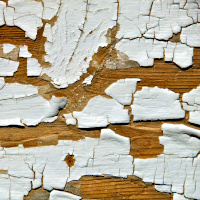
The Effects of Lead Exposure
Exposure to lead can seriously harm a child’s health and cause well-documented adverse effects.
Adverse effects can include:
- Damage to the brain and nervous system
- Slowed growth and development
- Learning and behavior problems
- Hearing and speech problems
This can cause:
- Lower IQ
- Decreased ability to pay attention
- Underperformance in school
There is also evidence that childhood exposure to lead can cause long-term harm. Lead exposure in children is often difficult to see. Most children have no obvious immediate symptoms.
If there’s suspicion that a child may have been exposed to lead, parents should talk to their child’s healthcare provider about getting a blood lead test.
Many private insurance policies cover the cost of testing for lead in the blood. The cost of blood lead testing for children enrolled in Medicaid is covered by the Centers for Medicare & Medicaid services.
Take these steps to make your home lead-safe:
- Talk with your child’s doctor about a simple blood lead test. If you are pregnant or nursing, talk with your doctor about exposure to sources of lead.
- Talk with your local health department about testing paint and dust in your home for lead if you live in a home built before 1978.
- Renovate safely. Common renovation activities (like sanding, cutting, replacing windows, and more) can create hazardous lead dust. If you’re planning renovations, use contractors certified by the Environmental Protection Agency (visit www.epa.gov/lead for information).
- Remove recalled toys and toy jewelry from children and discard as appropriate. Stay up-to-date on current recalls by visiting the Consumer Product Safety Commission’s website: www.cpsc.gov.
Lead Poisoning Prevention Principles
What Is Lead?
Lead is a highly toxic metal that may cause a range of health problems, especially in young children. When lead is absorbed into the body, it can cause damage to the brain and other vital organs, like the kidneys, nerves and blood.
Source: https://www.hud.gov/program_offices/healthy_homes/healthyhomes/lead
Lead may also cause behavioral problems, learning disabilities, seizures and in extreme cases, death. Some symptoms of lead poisoning may include headaches, stomach aches, nausea, tiredness and irritability. Children who are lead poisoned may show no symptoms.
Source: https://www.hud.gov/program_offices/healthy_homes/healthyhomes/lead
The health effects of exposure are more harmful to children less than six years of age because their bodies are still developing and growing rapidly. Young children also tend to put their hands or other objects, which may be contaminated with lead dust, into their mouths, so they are more likely to be exposed to lead than older children.
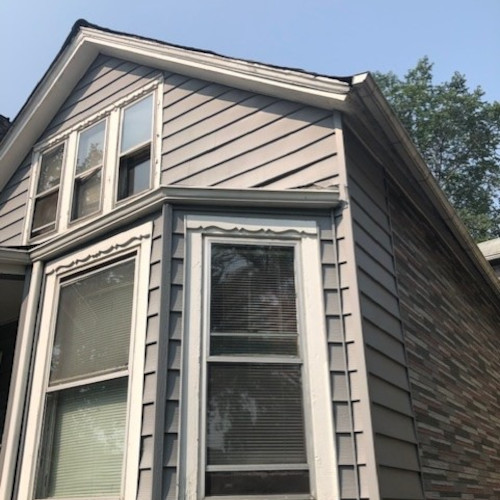
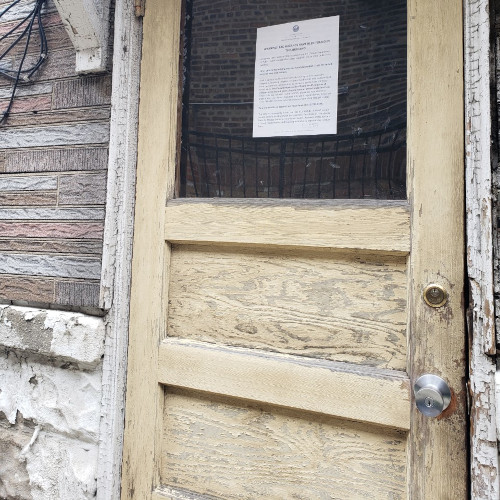
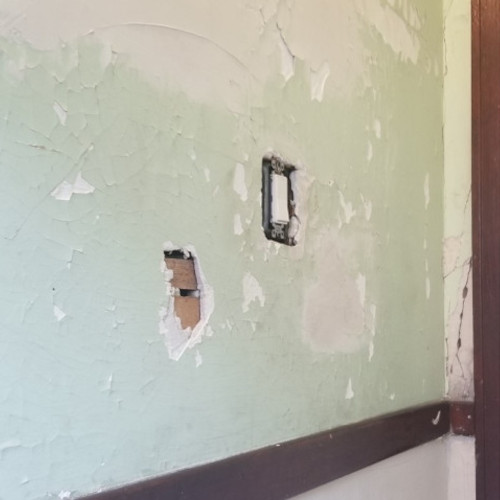

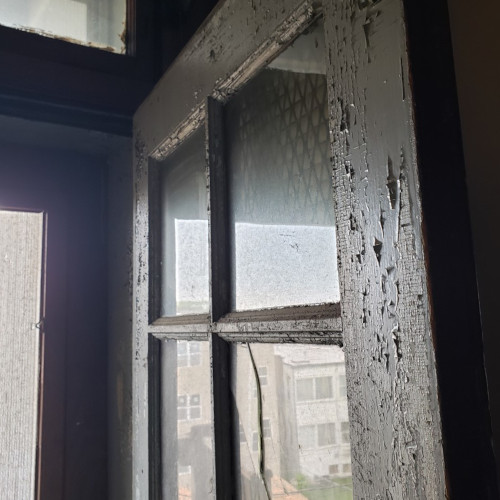
Sources of Lead Hazard Exposure
Lead can be found throughout a child’s environment in some of these places:
- Homes built before 1978 (when lead-based paints were banned) probably contain lead-based paint. When the paint peels and cracks, it makes lead dust. Children can be exposed to lead when they swallow or breathe in lead dust.
- Certain water pipes may contain lead.
- Lead can be found in some products such as toys and jewelry.
- Lead is sometimes in candies or traditional home remedies.
- Certain jobs and hobbies involve working with lead-based products, like stain glass work, and may cause parents to bring lead into the home.
- Children who live near airports may be exposed to lead in air and soil from aviation gas.
Special Information For:
- Healthcare Providers: Lead Testing Guidelines
- Building Contractors and DIY: Renovate Repair Rule
Contact Us:
- Hotline: 312.747.LEAD (312.747.5323)
- Address: 2133 W. Lexington St., Chicago, IL 60612





